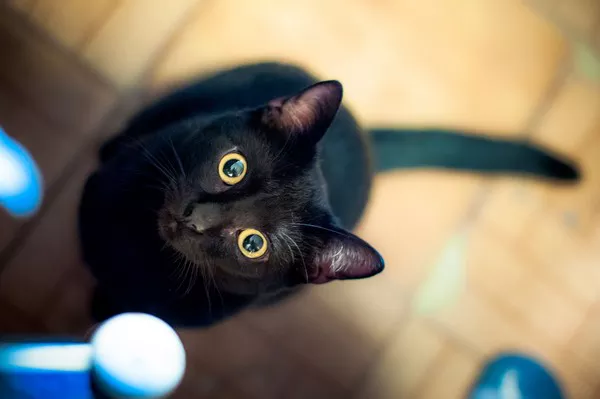At two months old, kittens are transitioning from their mother’s milk to solid foods, marking a crucial stage in their development. This period is not only significant for physical growth but also for socialization and behavioral training. Understanding what a 2-month-old kitten should eat is essential for ensuring they grow into healthy, well-adjusted cats.
The Importance of Early Nutrition
Proper nutrition during the early stages of a kitten’s life is vital because it sets the foundation for long-term health. Kittens experience rapid growth and development during their first few months, and their dietary needs are distinct from those of adult cats. During this period, their bodies require high levels of protein, fat, and essential nutrients to support muscle development, bone growth, and immune system function.
Transitioning from Milk to Solid Foods
By the time a kitten reaches two months of age, they should be weaned off their mother’s milk or formula and gradually introduced to solid foods. This transition is a delicate process that requires careful attention to ensure the kitten’s digestive system can handle the change without distress.
Weaning Process:
Gradual Introduction: Start by offering small amounts of wet food mixed with warm water or kitten formula to create a gruel-like consistency. This helps the kitten adjust to the texture and taste of solid foods.
Frequency: Initially, feed the kitten three to four times a day, gradually reducing the frequency as they become more accustomed to solid foods.
Monitor Digestion: Keep an eye on the kitten’s stool to ensure it remains firm and well-formed. Diarrhea or constipation may indicate that the transition is happening too quickly or that the kitten is sensitive to certain ingredients.
Nutritional Requirements
A 2-month-old kitten has specific nutritional needs that must be met to support their rapid growth and development. Here are some key components to consider:
Protein:
High-Quality Sources: Look for kitten foods that contain high-quality animal proteins such as chicken, turkey, beef, or fish. These proteins provide essential amino acids that are crucial for muscle development.
Amount: Kittens require more protein than adult cats, typically around 30% of their daily caloric intake.
Fat:
Essential Fatty Acids: Fat is a concentrated source of energy and provides essential fatty acids like omega-3 and omega-6, which are important for skin and coat health.
Amount: Aim for about 20% of the kitten’s daily caloric intake to come from fats.
Carbohydrates:
Limited Intake: Unlike dogs, cats are obligate carnivores and do not require a high carbohydrate intake. However, some carbohydrates are necessary for energy and fiber.
Sources: Choose kitten foods that contain easily digestible carbohydrates like rice or potatoes.
Vitamins and Minerals:
Calcium and Phosphorus: These minerals are crucial for bone and tooth development. Ensure the kitten food has a balanced ratio of calcium to phosphorus (approximately 1.2:1).
Vitamin D: Essential for calcium absorption and bone health.
Iron and B Vitamins: Important for blood formation and energy metabolism.
Types of Food
When selecting food for a 2-month-old kitten, there are several options to consider:
Wet Food:
Benefits: Wet food is highly palatable and contains a high moisture content, which helps keep the kitten hydrated. It is also easier for young kittens to digest.
Types: Look for kitten-specific wet foods that are labeled as “complete and balanced.” These foods are formulated to meet the nutritional needs of growing kittens.
Dry Food:
Benefits: Dry food is convenient and can be left out for the kitten to graze on throughout the day. It also helps promote dental health by reducing plaque buildup.
Considerations: Some kittens may have difficulty transitioning to dry food due to its harder texture. Start by mixing dry food with wet food or soaking it in water to soften it.
Combination Feeding:
Flexibility: Many owners opt for a combination of wet and dry food to provide variety and ensure the kitten receives all necessary nutrients.
Portion Control: Be mindful of portion sizes to avoid overfeeding, which can lead to obesity and other health issues.
Feeding Schedule
Establishing a consistent feeding schedule is important for a 2-month-old kitten. Here are some guidelines to follow:
Frequency:
Three to Four Meals: Feed the kitten three to four times a day to ensure they receive adequate nutrition without overwhelming their small stomachs.
Portion Sizes: Divide the recommended daily amount of food into smaller portions. For example, if the kitten should eat 180 grams of food per day, divide it into four meals of 45 grams each.
Timing:
Regular Intervals: Try to feed the kitten at regular intervals, such as every 4 to 6 hours. This helps maintain a consistent routine and prevents hunger and overeating.
Adjust as Needed: As the kitten grows, you can gradually reduce the number of feedings while increasing the portion size.
Monitoring Growth and Health
Regularly monitoring your kitten’s growth and health is crucial during this developmental stage. Here are some signs to watch for:
Weight Gain:
Consistent Increase: A healthy kitten should gain weight steadily. Weigh the kitten weekly and keep track of their progress. Consult your veterinarian if the kitten is not gaining weight as expected.
Stool Quality:
Firm and Well-Formed: Healthy stools should be firm and well-formed. Soft or runny stools may indicate a digestive issue, while hard, dry stools could suggest dehydration or constipation.
Energy Levels:
Active and Playful: A well-nourished kitten should be active, playful, and curious. If the kitten appears lethargic or uninterested in play, it may be a sign of an underlying health issue.
Coat Condition:
Shiny and Glossy: A healthy kitten will have a shiny, glossy coat. Dry, dull, or patchy fur may indicate a nutritional deficiency or other health problem.
Common Feeding Mistakes to Avoid
Feeding a 2-month-old kitten can be challenging, and there are several common mistakes to avoid:
Overfeeding:
Risk of Obesity: Overfeeding can lead to obesity, which increases the risk of various health problems, including diabetes, arthritis, and heart disease.
Portion Control: Follow the feeding guidelines provided on the food packaging and adjust as needed based on the kitten’s individual needs.
Underfeeding:
Growth Stunting: Underfeeding can result in stunted growth and developmental delays. Ensure the kitten is receiving enough food to support their rapid growth.
Consult a Veterinarian: If you are unsure about the appropriate amount of food, consult your veterinarian for personalized advice.
Feeding Adult Cat Food:
Nutritional Deficiencies: Adult cat food does not contain the higher levels of protein, fat, and other nutrients required by growing kittens. Stick to kitten-specific foods to ensure proper nutrition.
Sudden Diet Changes:
Digestive Upset: Abrupt changes in diet can cause digestive upset, leading to diarrhea, vomiting, or loss of appetite. Transition to new foods gradually over a period of 7 to 10 days.
Special Considerations
Some kittens may have special dietary needs or health conditions that require additional considerations:
Allergies and Sensitivities:
Identifying Allergens: If your kitten shows signs of allergies, such as itching, hair loss, or digestive issues, consult your veterinarian to identify potential allergens.
Hypoallergenic Diets: Consider hypoallergenic kitten foods that are free from common allergens like chicken, beef, or dairy.
Health Conditions:
Prescription Diets: Certain health conditions, such as urinary tract issues or gastrointestinal disorders, may require specialized diets prescribed by a veterinarian.
Regular Check-Ups: Schedule regular veterinary check-ups to monitor the kitten’s health and address any issues promptly.
Conclusion
Feeding a 2-month-old kitten involves careful consideration of their nutritional needs, gradual transition from milk to solid foods, and regular monitoring of their growth and health. By providing a balanced diet and following a consistent feeding schedule, you can help ensure your kitten grows into a healthy, happy adult cat. Remember to consult your veterinarian for personalized advice and to address any concerns you may have during this critical period of development.
Related topic:



























